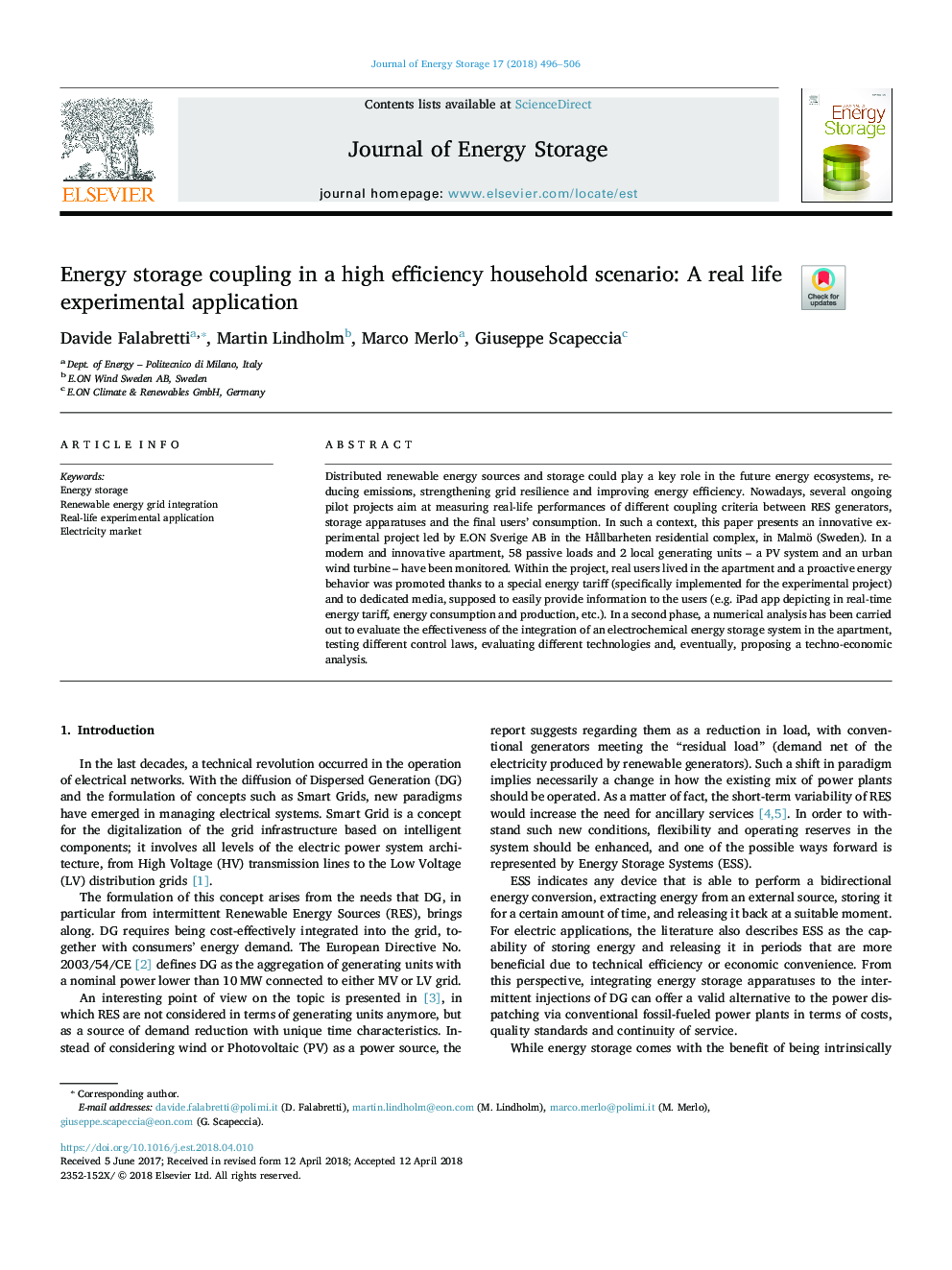| Article ID | Journal | Published Year | Pages | File Type |
|---|---|---|---|---|
| 7540104 | Journal of Energy Storage | 2018 | 11 Pages |
Abstract
Distributed renewable energy sources and storage could play a key role in the future energy ecosystems, reducing emissions, strengthening grid resilience and improving energy efficiency. Nowadays, several ongoing pilot projects aim at measuring real-life performances of different coupling criteria between RES generators, storage apparatuses and the final users' consumption. In such a context, this paper presents an innovative experimental project led by E.ON Sverige AB in the HÃ¥llbarheten residential complex, in Malmö (Sweden). In a modern and innovative apartment, 58 passive loads and 2 local generating units - a PV system and an urban wind turbine - have been monitored. Within the project, real users lived in the apartment and a proactive energy behavior was promoted thanks to a special energy tariff (specifically implemented for the experimental project) and to dedicated media, supposed to easily provide information to the users (e.g. iPad app depicting in real-time energy tariff, energy consumption and production, etc.). In a second phase, a numerical analysis has been carried out to evaluate the effectiveness of the integration of an electrochemical energy storage system in the apartment, testing different control laws, evaluating different technologies and, eventually, proposing a techno-economic analysis.
Keywords
Related Topics
Physical Sciences and Engineering
Energy
Energy (General)
Authors
Davide Falabretti, Martin Lindholm, Marco Merlo, Giuseppe Scapeccia,
